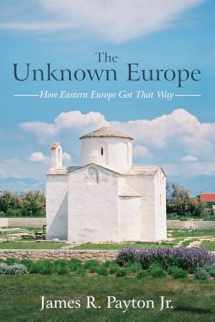
The Unknown Europe: How Eastern Europe Got That Way
Book details
Summary
Description
The fascinating history of Eastern Europe includes highs of soaring cultural achievement and lows of almost unimaginable repression. But we in the West don't know much about Eastern Europe or its history--this book helps us see why. We got interested when the region became a threat during the Cold War, but what we learned focused on the Communist period after World War II--not Eastern Europe itself or its deep history, a history that continues to live in the hearts of its peoples. James Payton offers an accessible treatment of the history of the region, an opportunity to learn about Eastern Europeans as they are. He overviews that story from pre-history to the present, examining eleven turning points that profoundly shaped Eastern European history. His treatment considers the backgrounds to the turning points, the events, and the long-lasting impacts they had for the various Eastern European nations. This helps us understand how Eastern Europeans themselves see their history--the "long haul" over the centuries, with the influence and impact of events of the sometimes-distant past shaping how they see themselves, their neighbors, and their place in the world.


We would LOVE it if you could help us and other readers by reviewing the book
Book review



